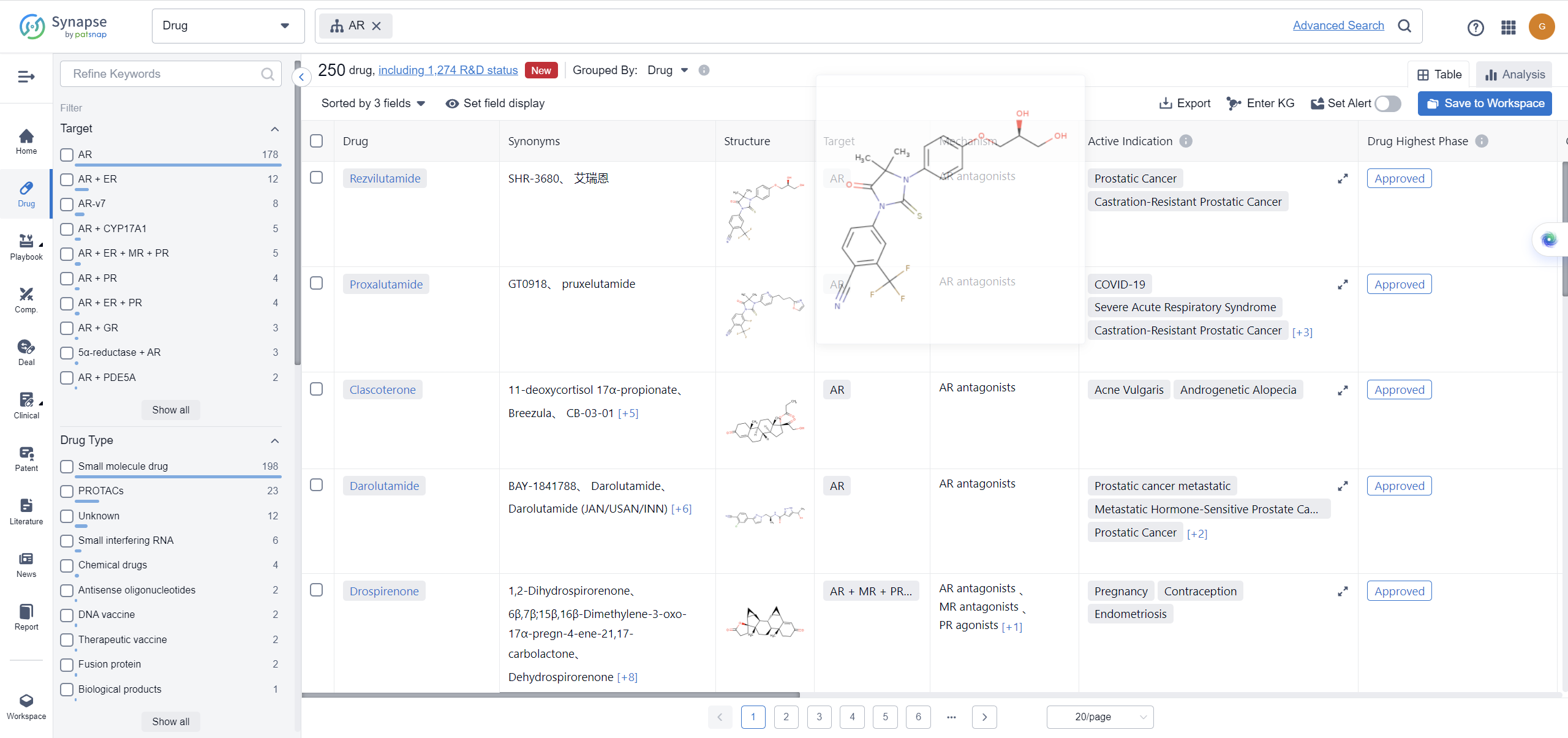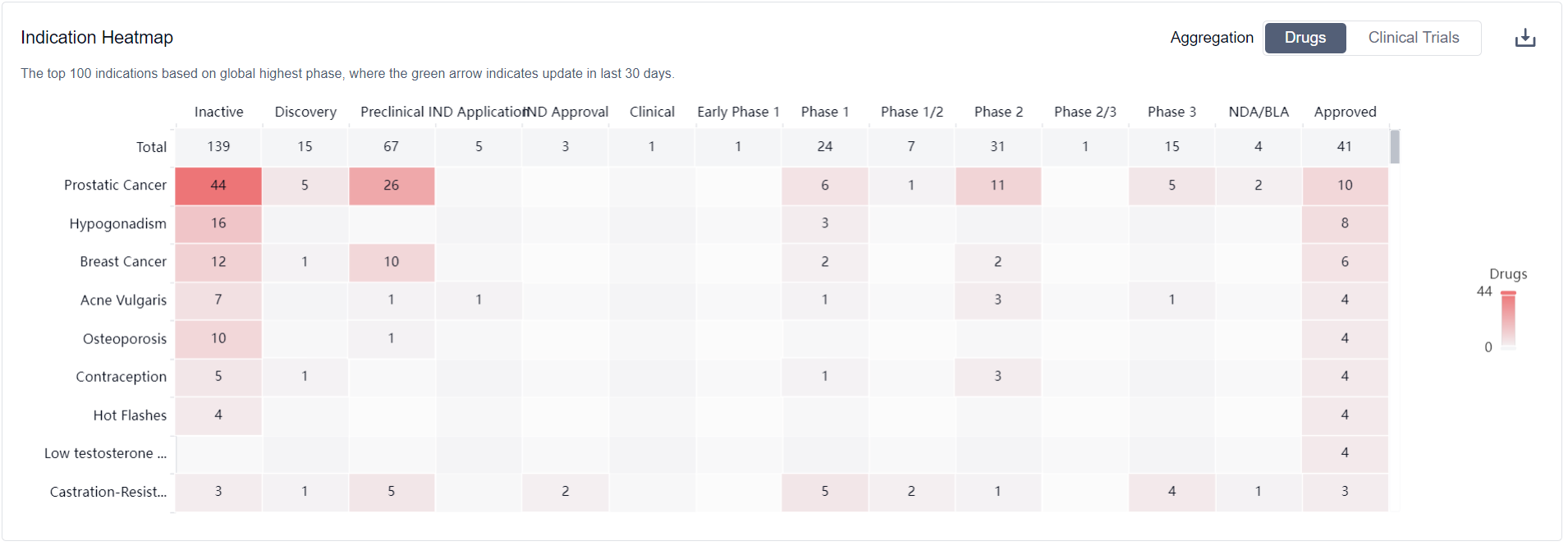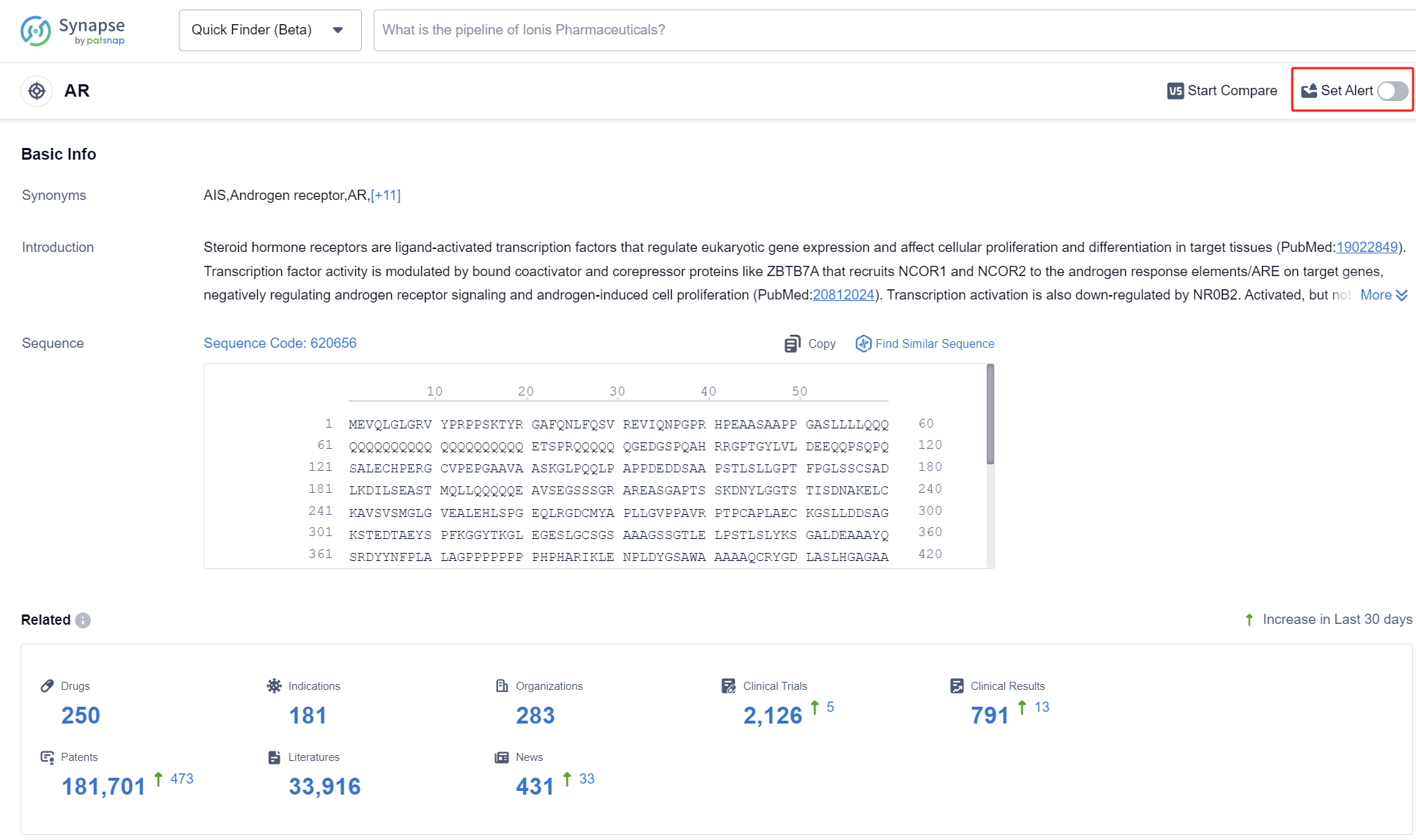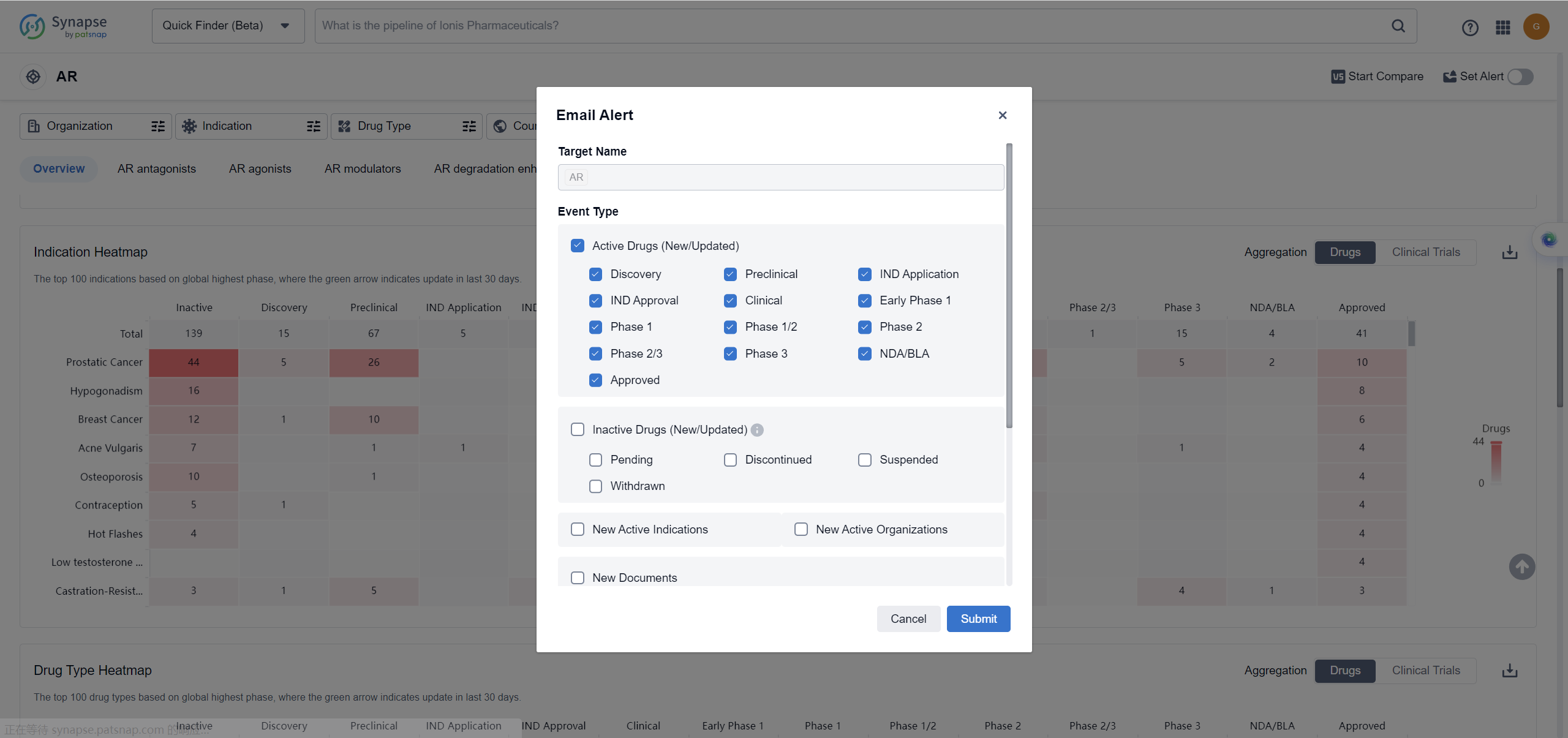What are androgen receptor inhibitors and how do you quickly get the latest development progress?
AR, or Androgen Receptor, plays a crucial role in the human body. It is a protein found in cells that binds to androgens, such as testosterone and dihydrotestosterone. Once bound, AR regulates gene expression, leading to the development and maintenance of male sexual characteristics. Additionally, AR is involved in various physiological processes, including bone and muscle growth, hair growth, and the regulation of mood and cognition. Dysregulation of AR activity can contribute to several diseases, including prostate cancer and androgen insensitivity syndrome. Understanding the role of AR is essential for developing targeted therapies and improving patient outcomes in the pharmaceutical industry.
The androgen receptor (AR) signaling pathway plays a crucial role in all stages of the development and progression of prostate cancer. The ligament (dihydrotestosterone) binds to the AR, inducing its activation and entry into the nucleus. Within the cell nucleus, the AR binds to the androgen response element (ARE), acting as a transcriptional activator, promoting tumor cell proliferation and invasion, among other biological functions. Androgen deprivation therapy (ADT), which targets the AR, has become the fundamental treatment for late-stage prostate cancer.
Moreover, the formation process of some splice isoforms of AR (e.g., AR-V7) results in incomplete AR proteins. Due to the absence of the LBD functional domain for ligament binding, these proteins can retain activation independent of androgens. This abnormal transcriptional regulation can lead to the progression of hormone-sensitive prostate cancer to castration-resistant prostate cancer (CRPC) after ADT, becoming a bottleneck stage in the treatment of advanced prostate cancer.
Interestingly, the AR signaling pathway not only plays a key role in male reproductive malignancies but also plays a significant role in other malignant tumors such as bladder cancer and breast cancer. The occurrence, progression, prognosis and drug treatment response of these tumors show clear gender differences, the mechanism of which is unclear.
How do they work?
AR inhibitors, also known as androgen receptor inhibitorsare a type of medication that block the activity of theandrogen receptor. The androgen receptor is a proteinfound in cells that binds to androgen hormones, such astestosterone and dihydrotestosterone (DHT). By inhibitingthe androgen receptor, AR inhibitors can interfere with thesignaling pathway that is activated by androgens.
In the context of biomedicine, AR inhibitors are primarilyused in the treatment of hormone-dependent cancers,particularly prostate cancer. Prostate cancer cells oftenrely on androgen signaling for their growth and survivalBy blocking the androgen receptor, AR inhibitors cansuppress the growth of prostate cancer cells and slowdown the progression of the disease.
AR inhibitors can be classified into different types basedon their mechanism of action. Some AR inhibitors directlycompete with androgens for binding to the androgenreceptor, while others prevent the androgen receptor fromtranslocating into the nucleus of the cell or interacting withcoactivator proteins. Examples ofAR inhibitors includeenzalutamide,bicalutamide. and abiraterone acetate.
lt is important to note that AR inhibitors are prescribed andused under medical supervision, as they can have sideeffects and interactions with other medications. Commonside effects may include fatique, hot flashes, decreasedlibido, and gastrointestinal disturbances. Additionally,ARinhibitors are generally not recommended for use inwomen, as they can interfere with normal hormonalfunction.
List of androgen receptor Inhibitors
The currently marketed androgen receptor inhibitors include:
- Rezvilutamide
- Proxalutamide
- Clascoterone
- Darolutamide
- Drospirenone
- Apalutamide
- Prasterone
- Testosterone Undecanoate
- Enzalutamide
- Drospirenone/Estetrol
For more information, please click on the image below.
What are androgen receptor inhibitors used for?
Androgen receptor inhibitors can use to several diseases, including prostate cancer and androgen insensitivity syndrome. For more information, please click on the image below to log in and search.
How to obtain the latest development progress of androgen receptor inhibitors?
In the Synapse database, you can keep abreast of the latest research and development advances of androgen receptor inhibitors anywhere and anytime, daily or weekly, through the "Set Alert" function. Click on the image below to embark on a brand new journey of drug discovery!








